
IN MEMORIAM: DRS. R. THOMAS SCHAUB AND MARILYN MCNAMARA SCHAUB
Meredith S. Chesson and Morag M. Kersel
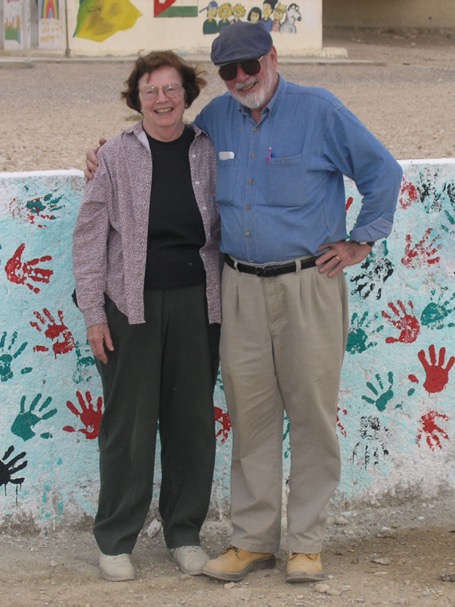
Figure 1: Marilyn and Tom Schaub in Safi, Jordan in 2004 (Photograph by Meredith S. Chesson, EDSP Archives)
Editorial note: this post is the first in a series of essays honoring ASOR members who have made a legacy gift to ASOR.
The legacy of Tom and Marilyn Schaub’s substantial scholarly and deeply personal contributions to ASOR resonate strongly today, offering a promise of a healthy future for the organization. Their professional engagements with ASOR, such as their roles as Trustee members and service in other administrative capacities, are well known and can easily be traced through public and archival records. Instead of attempting to enumerate these profound accomplishments in such a short space, we prefer to dedicate our time to the less official but equally important contributions they made to ASOR and to the field of Early Bronze Age archaeology in the southern Levant as tremendous scholars and generous human beings (Figure 1).
We begin at the start of their professional and personal association: as young members of the Dominican Order, they met in Jerusalem at the École Biblique in a course taught by the archaeologist Roland De Vaux in the mid-1960s. Shortly thereafter, when Paul Lapp needed an architect for excavations at the Early Bronze Age site of Bab adh-Dhra` (Jordan), Marilyn McNamara (already a team member and holding a PhD from Freiburg) suggested that he invite Tom Schaub to fulfill that role. In 1967, they worked on Lapp’s team, and this professional foundation flourished over decades of their lifelong partnership (Figure 2). Fewer than 10 years after that initial season at Bab adh-Dhra`, they had left the order, married, become parents, Tom finished his PhD at the University of Pittsburgh, and they both accepted teaching positions: Marilyn at Duquesne University and Tom at Indiana University of Pennsylvania.
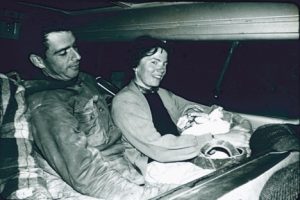
Figure 2: Tom and Marilyn carrying Bab adh-Dhra` tomb pottery back up to Karak in 1967 (Photograph by Paul Lapp, EDSP Archives)
In 1973, Tom and Marilyn collaborated with Walter and Susanna Rast to establish the Expedition to the Dead Sea Plain (EDSP). During that same year, they conducted their initial survey of the region, identifying several prehistoric and historic sites and establishing the professional groundwork for more than four decades of archaeological research. This survey season, and the subsequent archaeological excavations at the Early Bronze Age sites of Bab adh-Dhra`, Numayra, Ras an-Numayra, Fifa, and Khirbat Khanazir, represent a disciplinary watershed in prehistoric archaeology in the region. By adopting and demonstrating the power of the New Archaeology’s methods and theories, with a focus on environmental archaeology in the Levant, they changed the discipline. To investigate Early Bronze Age urban society, they built a research team encompassing a wide variety of specialties, including geology, palynology, ceramic technology, paleoethnobotany, and bioarchaeology.
Using this multidisciplinary research design, they planned their excavations with two key objectives:
(1) To investigate how the local environment shaped and influenced the emergence of fortified towns (small scale urbanism) in this region, and (2) To examine both the residential contexts as well as the cemeteries, temples, palaces, and fortification walls.
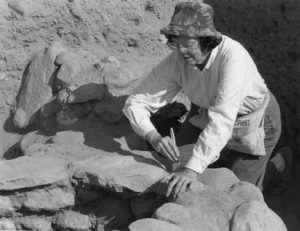
Figure 3: Marilyn excavating an EB IA cist tomb at Fifa, December 1989-January 1990 (EDSP Archives)
They adopted scientific and systematic ways to collect and to analyze the artifacts they found within settlement and cemetery sites while applying innovative research methods. For instance, together with Smithsonian Institution’s bioarchaeologists Don Ortner and Bruno Fröhlich, they used magnetometry to identify shaft tombs below the surface at Bab adh-Dhra` in 1981. Working closely with Bob Johnston, Tom investigated EBA ceramic technology, setting new scholarly standards by combining SEM and petrographic analyses of fabrics with ethnoarchaeological studies of traditional potters working with and without wheel technologies. No longer was pottery a simple chronological marker, function and technique were a focus.
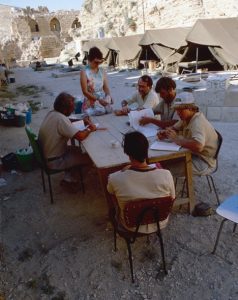
Figure 4: Pottery Reading at Karak Castle, 1977. Marilyn (standing) and Tom (seated on left) reading pottery with the field supervisors (Photograph by Mark McConnaughy, EDSP Archives)
While Tom and Walt acted as the Co-Directors of the EDSP, Marilyn worked tirelessly as Administrative Director of this large and complicated project. In the field, she was a skilled excavator, whose field notebooks stand as exemplars of the genre, while also helping to manage the artifact registration, pottery readings, and any other daily challenges familiar to all excavation field directors (Figures 3 and 4). Throughout the years, Tom and Marilyn, together with Walt, Susanna, and Nancy Lapp, worked collectively to conduct this research.
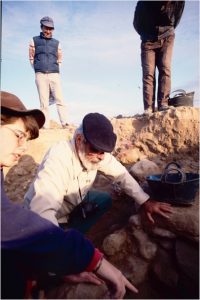
Figure 5: Tom working with Helen in the Fifa excavations, with Walter Rast looking down from the trench edge in December 1989-January 1990 (EDSP Archives)
The success of this team over many decades emerged from the community that Marilyn, Tom, Walt, Susanna, and Nancy fostered. Often, fieldwork was not only a collective effort, but also a family affair. Helen Schaub grew up on the excavations, and in the 1989-90 season she excavated at Fifa along with her parents (Figure 5). Tom and Marilyn worked together with Walt, Susanna, and Nancy to nurture this scholarly community, weaving together their families and colleagues over many years to sustain a long-term research endeavor. This archaeological community was nourished by respect, friendship, compromise, and engaged listening.
In her eulogy for her mother, Helen celebrated Marilyn’s gift of friendship. In many ways, Tom’s and Marilyn’s largest contributions to ASOR and the field of southern Levantine archaeology emerge from the very humane and human way they approached research: through generosity, friendship, and community. The decades of work by Marilyn and Tom, together with Walt, Susanna, and Nancy, teach us more than how to excavate or how to understand the Early Bronze Age emergence of urbanism. Their legacy offers us crucial lessons about how to be good scholars, profoundly good people, and how to learn from and teach others about collective responsibility, not simply serving our academic selves. As the new Co-Directors of the EDSP, we hope that we can honor their legacy by creating such a vibrant community, offering support to young scholars, and fulfilling our obligations to the Jordanian people with whom we collaborate and for whom we ultimately work.
Legacy gifts to ASOR: Tom and Marilyn Schaub not only devoted their lives to the service of our fields and institutions like ASOR, but they also had the foresight to think about how to continue that support in perpetuity. In the case of the Schaub’s, they decided to leave a percentage of an IRA held with TIAA/CREF. The ASOR Board voted unanimously to invest this gift in ASOR’s endowment for operations. Their gift will thus produce income to support the ongoing work of ASOR—and continue the Schaub legacy—in perpetuity. With the passage of new tax laws that took effect on January 1, 2020, the donation of an IRA, 401(k), or 403(b) to ASOR or another charity may be even more beneficial than ever in terms of estate taxes. Of course, you should consult your tax adviser. If you are interested in finding out more about ASOR’s Legacy Circle or how you might make a planned gift to ASOR, please contact ASOR Executive Director, Andy Vaughn.